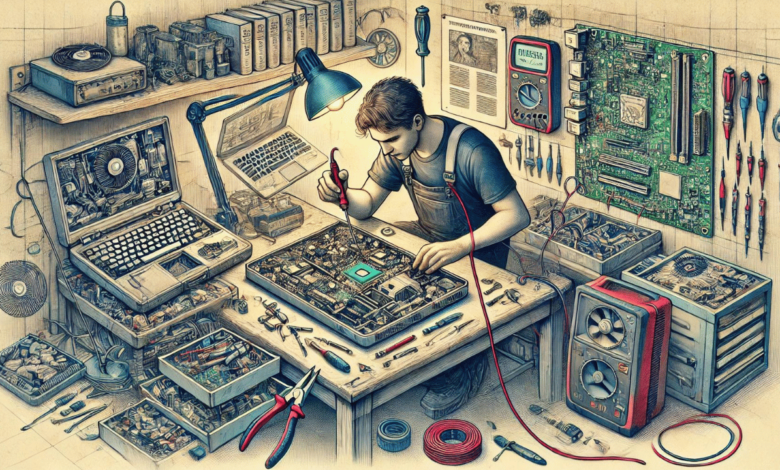Reviving the Past: A Comprehensive Guide to Legacy-Tech Laptop Repair

Introduction to Legacy-Tech Laptop Repair
In an era dominated by rapid technological advancements, the charm and utility of legacy-tech laptops remain undeniable for many enthusiasts and professionals alike. Despite their age, these machines often carry significant functional and sentimental value, making their maintenance and repair a subject of keen interest. This comprehensive guide delves into the nuances of repairing legacy-tech laptops, offering insights into the techniques, challenges, and benefits of keeping these venerable machines in top condition.
Understanding Legacy-Tech Laptops
Legacy-tech laptops refer to older models that are no longer in production and may not receive official support from the manufacturer. These include models considered obsolete due to the advancements in hardware and software technologies. The appeal of these laptops can be attributed to various factors, including nostalgia, the preference for specific operating systems, software compatibility, or simple economic value.
Challenges of Repairing Legacy-Tech Laptops
Repairing legacy laptops presents unique challenges:
- Availability of Parts: Finding compatible hardware components like specific chipsets, older RAM modules, or suitable replacement screens can be difficult as these parts are no longer mass-produced.
- Software Issues: Older laptops might struggle with newer software applications, and finding compatible drivers can be painstaking.
- Technical Know-how: Repairing these machines often requires specific skills and knowledge about older technology that many modern technicians may need more.
Step-by-Step Repair Guide
Hardware Repairs
- Disassembly: Carefully disassemble the laptop. This process is crucial as improper handling can damage the fragile components of older laptops.
- Component Replacement: Identify and replace faulty hardware such as HDDs, batteries, and RAM. It’s essential to source compatible parts that match the laptop’s specifications to ensure functionality.
- Reassembly and Testing: After replacing the components, reassemble the computer and conduct thorough testing to ensure everything functions correctly.
Software Repairs
- Operating System Updates: Install or upgrade to the latest compatible operating system to enhance performance and security.
- Driver Updates: Update all necessary drivers to ensure hardware compatibility and optimal performance.
- Software Optimization: Install security patches and optimize settings to improve the laptop’s operation and security.
Sourcing Replacement Parts
Finding replacement parts for legacy-tech laptops involves several strategies:
- Online Marketplaces: Websites like eBay and Amazon can be valuable resources for finding needed parts.
- Specialized Repair Shops: Some shops focus on older technology and can provide both parts and expert advice.
- Recycling Parts: Harvesting usable parts from other broken or obsolete laptops is another economical solution.
Best Practices for Legacy Laptop Repair
- Maintain a Clean Workspace: Keep your workspace organized to avoid losing small parts and to facilitate a smooth repair process.
- Document the Process: Take detailed notes or photographs during disassembly to aid in reassembling the laptop correctly.
- Use the Right Tools: Employ proper tools for electronics repair to avoid damaging the components.
Cost Considerations
Before proceeding with a repair, consider the following:
- Cost vs. Replacement: Assess whether the repair costs are justified or if replacing the device would be more economical.
- Data Value: Consider the importance of the data on the device. Sometimes, the data might be worth more than the laptop itself.
Conclusion
Repairing legacy-tech laptops is not just about keeping old technology operational; it’s about preserving a piece of history and maintaining functionality that meets specific needs. Whether for personal satisfaction, economic reasons, or environmental considerations, the ability to repair these machines speaks volumes about the enduring impact of technology from past generations. By following the outlined steps and advice, enthusiasts and professionals can ensure that these legacy devices continue to serve their purpose well into the future.
FAQs on Legacy-Tech Laptop Repair
What is a legacy-tech laptop?
Can I upgrade the hardware in a legacy laptop?
Where can I find parts for legacy laptops?
Is it cost-effective to repair a legacy-tech laptop?
How do I prevent my legacy laptop from failing?
You May Also Read: Techo Elite .com: Your Ultimate Guide to the Digital Frontier




